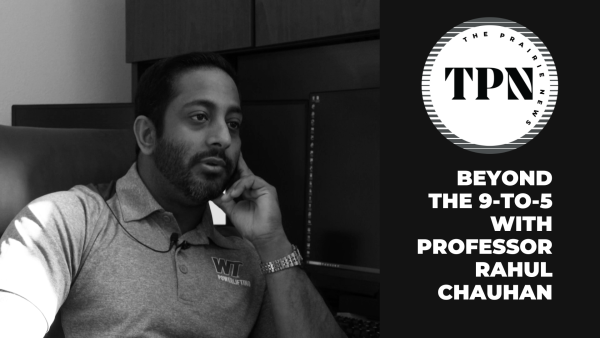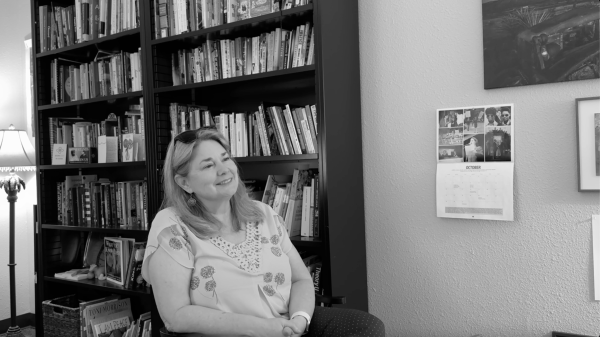Law and Chaos and Neutrality, oh my!

October 20, 2015
Imagine, if you will, a war that never ends. A war waged between the demons of Chaos and the forces of Law, with humanity stuck right in the middle. This conflict has been fought across the expanse of the multiverse for an eternity, with seemingly no end in sight. The only way to survive is to fight the demons, take control of them, and have them fight for you. Do you side with Law and rid the world of Chaos to impose a “perfect” society? Do you fight for Chaos to erase Law and secure absolute freedom where anything is allowed? Or do you strike out on your own and remain Neutral, rejecting both ideologies to fight for the betterment of mankind?
Such is the premise of ATLUS’ flagship franchise, Shin Megami Tensei, a series of JRPG Dungeon Crawlers (as well as numerous spin-offs) that date all the way back to 1987. While a direct competitor with Dragon Quest and Final Fantasy in Japan for decades, it never gained much attention in the western world until the introduction of Shin Megami Tensei III: Nocturne in 2003, though it still remained in relative obscurity. In 2006, Shin Megami Tensei: Persona 3 was released to critical acclaim, finally securing the franchise’s place in the western gaming community.
If the idea of capturing monsters to have them fight for you sounds familiar, you’re on the right track. While Pokémon might have popularized the formula, SMT was the franchise that brought the concept into the mainstream, though it in turn was inspired by a series of novels called Digital Devil Story.
While the setting and application can vary between each game, the core function is usually retained. The player character, usually joined by human teammates, battles demons and, when the chance arises, can convince or capture the demons to join the party. As they continue to fight, the demons level up with experience, learning new skills to add to their repertoire, replacing old skills with new, better ones when they can’t learn anymore. This part of the concept is familiar to those who played Pokémon, but SMT takes it a little further in that skills can be inherited through the next mechanic.
One thing that that is different is that demons don’t “evolve” when they hit a high enough level. In order to get more powerful demons, they have to be “fused” with other demons to make stronger creations. Some fusions can be created through various combinations, but others have very specific catalysts that are needed to achieve a successful fusion. If a fusion isn’t properly prepared, there is a chance it might fail and create a lesser demon that is very weak in comparison to what could have been a successful fusion.
There are many, MANY demons to encounter, fight, and choose from. ATLUS has done their homework in this regard, choosing demons from various religion and mythology to include in their games, providing accurate information about each one that relates to their origins. Demons like Shiva, Vishnu, The Horsemen of the Apocalypse, Beelzebub, Amaterasu, Izanagi, and perhaps most infamously, Mara, are only some of the wide array of beings that have appeared throughout the franchise, some appearing as one-game wonders, others getting recurring appearances.
So what do these demons have to do with that Law vs. Chaos stuff that was going on further up? While some sub-series, such as the Persona series, don’t have as much of a connection to the conflict, the main branch of SMT revolves around this unending, multiversal war. On one side, we have the angelic forces of Law. They seek to impose a perfect world where their rules and word are upheld and that all worship their leader. Said leader is the big man himself, YHVH, the Great Will. On the other side, we have the demonic forces of Chaos. They wish for a world where all rules are cast aside, to have freedom from the Great Will and freedom to seek out their own destinies. The one who wishes to bring that freedom for all demons (and humanity) is the Morningstar, the once greatest angel of Heaven, Lucifer.
In a bit of a role reversal, the greater of two evils here isn’t Lucifer, but YHVH. His portrayal in Shin Megami Tensei is certainly NOT the embodiment of love and greatness that He is known for today. The Great Will is an egomaniacal, insane, iron-fisted tyrant that wants nothing more than ABSOLUTE obedience and reverence of His name, just to sate his own ego. If even one person on Earth doesn’t worship Him, he will flood the entire world out of rage. He cares nothing for his followers, only that they follow His every word.
Lucifer, on the other hand, only wants the best for humanity. He is well aware of what would happen if YHVH gets His way. All he wants is to free mankind from the shackles of tyranny that Law tries to impose upon them, choosing champions to bestow his power to so they can carry out his influence. However, this is still the demon that leads the forces of CHAOS. He wants to give freedom to everyone, but this is the freedom that is based in a “might makes right” ideology, where only the strongest and most ruthless can gain that freedom. Lucifer will manipulate events and people to carry out his desires all so that his dream can become a reality.
You, as the player character, have the choice to side with either factions and gain different endings based on how closely you followed each faction. You can net the Chaos Ending and help Lucifer succeed against Law, freeing the people from the Great Will’s, er, will, or you can gain the Law Ending, where you help wipe out the demons to bring a perfect society to humanity. However, there is a third option. By remaining Neutral, rejecting both sides’ ideologies, you can fight against both Chaos and Law to protect humanity from them. This is easily one of the hardest paths to follow, but the Neutral Ending is usually the best ending to the games.
There is so much more that can be said about the franchise and its numerous sub-series, namely that of the insane difficulty present across most of the games. For those looking into a darker take on JRPGs, difficult gameplay, compelling stories and characters, demons from numerous mythologies, and Mara, Shin Megami Tensei is a unique series that has many things to offer.














